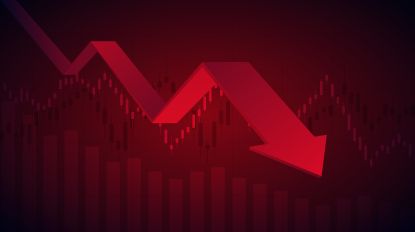It was an ugly day for stocks as the major market indexes extended yesterday’s Fed-induced slump into a second straight day.
Today’s selling was sparked by the latest batch of economic data, which exacerbated recession fears across Wall Street. Retail sales and manufacturing data released early Thursday showed that the Federal Reserve’s aggressive campaign of interest rate hikes are indeed cooling both the U.S. economy and inflation. And yet Fed Chair Jerome Powell warned Wednesday that rates could stay higher for longer until tightness in the labor market starts to ease.
One economic data point that didn’t come to pass today was any sign of cooling in the jobs market. Indeed, the Labor Department said earlier that weekly jobless claims (opens in new tab) fell by 20,000 last week to a seasonally adjusted 211,000.
Subscribe to Kiplinger’s Personal Finance Be a smarter, better informed investor.
Save up to 74%
Sign up for Kiplinger’s Free E-Newsletters Profit and prosper with the best of Kiplinger’s expert advice on investing, taxes, retirement, personal finance and more – straight to your e-mail.
Profit and prosper with the best of Kiplinger’s expert advice – straight to your e-mail.
Sign up for Kiplinger’s FREE Investing Weekly e-letter for stock, ETF and mutual fund recommendations, and other investing advice.
Progress on slowing the economy was seen elsewhere, however, with data from the Commerce Department showing that retail sales (opens in new tab) fell 0.6% month-over-month in November – the weakest reading since December 2021. Additionally, data from the Fed showed manufacturing activity in both New York state and the Philadelphia region declined by more than expected.
“The labor market might not be breaking but it is becoming clear the consumer is weakening and manufacturing activity is in a recession,” says Edward Moya, senior market strategist at currency data provider OANDA (opens in new tab). “Labor market weakness will be more noticeable next year and that should help reduce some of the constant wage pressures we are still seeing.”
Today’s selling was widespread, with the rate-sensitive communication services (-3.9%) and technology (-3.7%) sectors bearing the brunt of the losses. As for the major indexes, the tech-heavy Nasdaq Composite slumped 3.2% to 10,810, the broader S&P 500 Index fell 2.5% to 3,895, and the blue-chip Dow Jones Industrial Average dropped 2.3% to 33,202. It was the largest one-day drop for all three indexes since September.
Is Growth Poised for a Comeback?We’re close to the end of what has been a truly unforgiving year for investors. After all, the S&P 500 is on track for its worst annual loss since 2008. Should investors expect more of the same in 2023? It depends on whom you ask.
Wells Fargo analysts Chris Harvey and Michael Turrin expect 2023 to be “a back-and-forth year.” Yes, they anticipate “double-digit sell-offs driven by the Fed and economic concerns,” but, “ultimately, we see equities ending higher as the inflation fever breaks, the economy enters a malaise (not a sharp recession) and interest rates plateau.” The duo add that the environment is supportive of growth, particularly at the mid-cap level, which is where they believe investors can find the best growth stocks.
Although there are plenty of opportunities to be found in growth-oriented investments, investors who want to spread the risk around may want to consider these best growth ETFs for 2023. The names featured here offer broad exposure to higher-risk, higher-reward stocks across a range of strategies.
